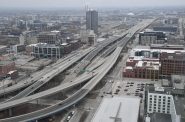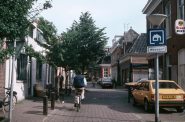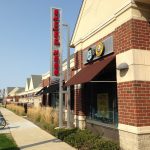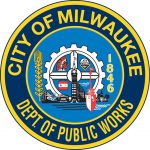Are Electric Minicars the Future?
All the city news you can use.

CITY4 from SC Carts. Photo by Devcrull, (CC BY-SA 4.0), via Wikimedia Commons.
Every day at The Overhead Wire we sort through over 1,500 news items about cities and share the best ones with our email list. Each week, we take some of the most popular stories and share them with Urban Milwaukee readers. They are national (or international) links, sometimes entertaining and sometimes absurd, but hopefully useful.
Are electric minicars the future?: Smaller electric vehicles could be poised to fill the space between bikes and cars as people look for more space and energy efficient alternatives to driving a car or truck. 80% of trips in the United States are under ten miles so a 25 mph limited neighborhood electric vehicle could make sense for some of them. Could lower prices and new technology usher in a minicar future? (Michael J. Coren | Washington Post)
Emissions reductions from active transportation: Much of the literature and research about emissions reduction in transportation is from mode shift, not addressing the potential for changes in frequency and length of trips. New research suggests that mode shift alone only accounts for 1/5th of the potential for emissions reductions. Only changing modes reduced emissions 37% while allowing for changes in destinations and frequency reduced them 51%. (Guo, Bigazzi, Chen | Transportation Research Part D: Transport and Environment)
Gas stations getting bigger: With many gas stations set to build more charging infrastructure for electric vehicles, they are also getting bigger to accommodate people waiting for people to fill up their batteries. These mega stations, many over 7,000 square feet, had mostly been waystations on interstate highways. But now they are also moving into suburban and urban spaces, conflicting with local land uses and policies. (Kevin Williams | New York Times)
Give communities good design: Basic public sector design including logos and public websites is often maligned as boring and ineffective. That’s mostly because many design decisions are afterthoughts. But good design need not be ignored by public officials and should be more than just aesthetics and “style” argues John Pobojewski. But there are solutions and thinking about design for procurement processes and community process with design is an important way forward. (John Pobojewski | Planetizen)
Expanding the street traffic academy: Indiana non-profit health by Design is partnering with the Indiana Criminal Justice Institute to hold regional workshops to teach safe systems thinking on traffic safety to local planners, staff, and residents. Additionally, Health by Design will provide customized crash analysis and technical assistance to high risk areas on how to identify the solutions to these problems. This builds on a Vision Zero ordinance passed by Indianapolis and pushes the solutions state wide. (Madelyn Hanes | News from the States)
Quote of the Week
But people are far too stuck, especially at a senior level, because they are quote-unquote, ‘railroaders,’ who have been doing this for a long time, and who can’t imagine another way of doing things.
-A senior Metrolinx employee in The Trillium discussing why an ambitious Toronto area commuter rail modernization was scuttled.
This week on the Talking Headways podcast we’re joined by Minneapolis bridge engineer Daniel Baxter to talk about his almost daily running commute. We chat about bridges, the gear you need for running in cold weather, staying safe on the roads, and the benefits of running to work.
Want more links to read? Visit The Overhead Wire and signup.
If you think stories like this are important, become a member of Urban Milwaukee and help support real, independent journalism. Plus you get some cool added benefits.
Urban Reads
-
The Dark Roof Lobby is Winning
 Jun 8th, 2025 by Jeff Wood
Jun 8th, 2025 by Jeff Wood
-
Is the Highway Trust Fund Dead?
 Jun 2nd, 2025 by Jeff Wood
Jun 2nd, 2025 by Jeff Wood
-
Washington State Legalizes Woonerfs
 May 24th, 2025 by Jeff Wood
May 24th, 2025 by Jeff Wood



















